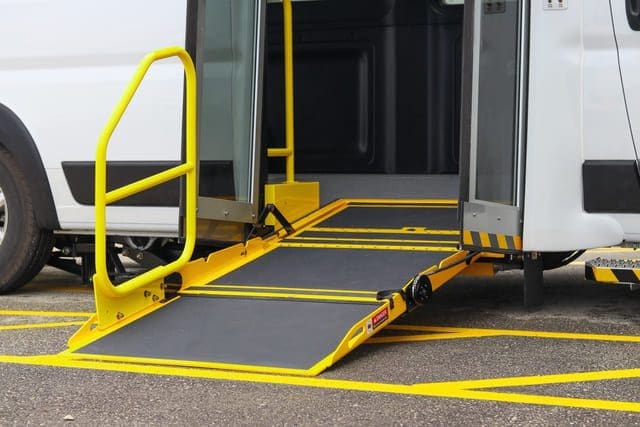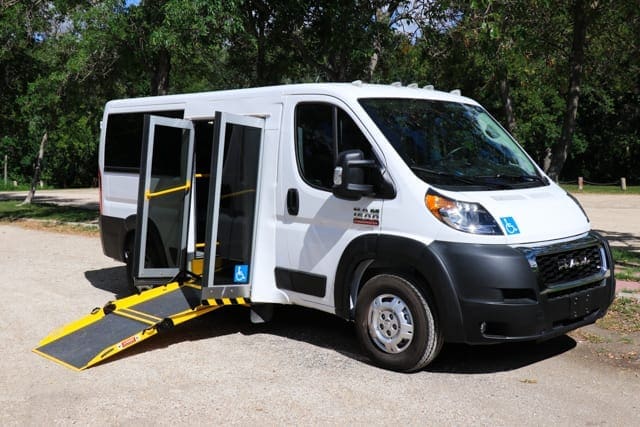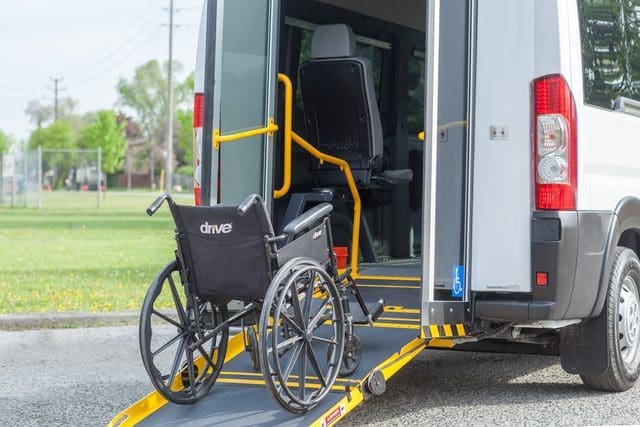Over 2.7 million Canadians live with a mobility disability. That’s nearly 1 in 10 people. For these individuals and the programs dedicated to supporting them, having a reliable wheelchair van ramp is vital for ensuring they can reach their destinations and maintain their independence.
But sometimes, the ramps break or stop working right when you’re using them. Maybe it’s stuck. Perhaps it won’t fold out. Or maybe it just froze halfway and now you’re standing there with a van full of people, wondering what to do next.
We know how stressful that feels. This is more than a minor hiccup. It causes delays, affects people’s trust, and makes your work harder than it needs to be. And if it happens often, it starts to feel like a real problem.
Here’s the good news: A lot of ramp issues are fixable, and some are even easy to prevent once you know what to look for.
MoveMobility has been building wheelchair accessible vehicles for over 20 years. We’ve helped hundreds of organizations like yours and the The Canadian Red Cross Society across Canada avoid problems like this. Our vans meet strict safety standards and are designed for real life. That means fewer headaches and more reliable service.
In this article, we’ll walk you through what to check, what to avoid, and how to keep your ramp working when it matters most.
Let’s get started.
What is the most common problem with wheelchair van ramps?
Over time, you may start to experience wheelchair van ramp issues, especially if you’ve had your wheelchair van for many years and aren’t regularly maintaining it. Let’s take a look at the most common problem that can happen with ramps.
Ramp won’t deploy under power
The most common problem with a wheelchair van ramp is that it won’t deploy while using power. You press the button, and nothing happens. It’s frustrating, especially when you’re in a hurry or helping someone who relies on that ramp to get out of the van.
There are a few things that might cause this:
- The van might not be in park
- The emergency brake might not be on
- The van doors might not be fully open
If any of these are off, the interlock system won’t send power to the ramp. This is a safety feature, but it can be confusing if you don’t know what to look for.
A quick way to check if your ramp system is getting power is to look at the green light on the interlock display. If it’s not lit up, the ramp won’t work until the issue is fixed.
8 things to check if your wheelchair van ramp stops working
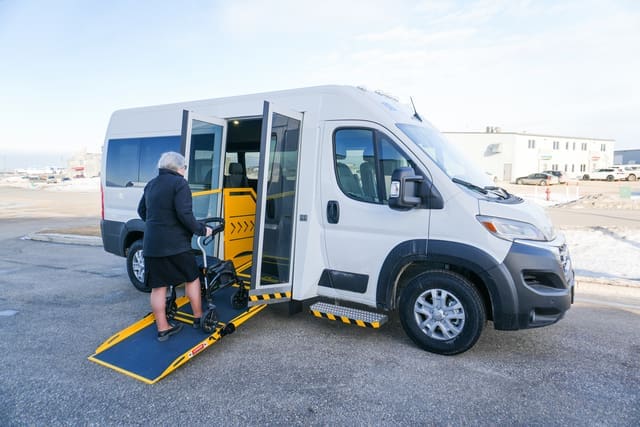
If your ramp suddenly stops working, don’t panic. Before you assume it’s a serious problem, take a minute to check these eight things:
1. Is the van in park?
Your ramp won’t deploy unless the transmission is in park. It’s a safety setting built into the system to prevent movement during loading or unloading.
2. Is the parking brake applied?
Many ramp systems need the parking brake to be fully engaged before the ramp will open. Double-check that it’s pulled tight or pressed down all the way.
3. Are the doors all the way open?
The ramp won’t deploy if the side doors are only halfway open or stuck. Open them fully and listen for the “click” that means they’re locked in place.
4. Is anything blocking the ramp path?
Even something small, like a rock or loose mat, can stop the ramp from coming out. Make sure the area around the ramp is totally clear.
5. Is the green light on the interlock display lit up?
This light shows the system is ready to deploy the ramp. If it’s off, one of the safety settings (like park brake or door position) might not be active.
6. Is your battery low?
If the vehicle battery is low or dying, there might not be enough power to run the ramp. Turn the ignition on and see if your dash lights look dim or slow.
7. Is the ramp due for regular servicing?
Like anything mechanical, ramps need check-ups too. If it hasn’t been serviced in a while, parts may stick, wear out, or lose power.
8. Is the manual release handle pulled up?
This handle lets you use the ramp manually. If it’s up, the power system disconnects, and the ramp won’t work until it’s reset properly.
These are all simple things, but they can stop a ramp from working. It’s usually something small, not a major breakdown. Catching the issue early can save you from a bigger repair bill later on.
How do you use the manual ramp release (if needed)?
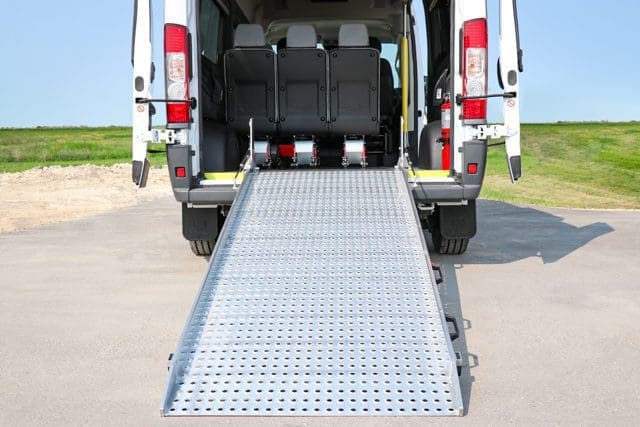
If your wheelchair ramp won’t deploy even after you’ve checked all the steps above, you can still use it manually.
Here’s how to do that:
- Find the manual release handle. It’s usually located to the right of the front passenger seat.
- Pull it up to disconnect the ramp from the hydraulic system.
- Then, pull the ramp out by hand.
This helps you get where you need to go until your van can be serviced. Keep in mind, this isn’t a fix. It’s just a backup method to help you in the moment.
If this keeps happening, it’s a good idea to schedule a check-up with a technician. They’ll be able to see if the issue is electrical, mechanical, or just a simple maintenance fix.
Can you fix a wheelchair van ramp yourself?
It’s tempting to try to fix things on your own. But with a wheelchair van ramp, it’s better to pause before diving in.
Start with a call: Reach out to our Customer Service Department before doing anything else. Our team can walk you through the basics over the phone and help figure out what’s going on.
Wheelchair ramps are tied into the van’s electrical and safety systems. Guessing the problem could make things worse or even damage the ramp.
What we’ll do:
- Help you check the simple stuff first (like the interlock system or battery level)
- Let you know if it’s safe to use the manual release
- Recommend the next steps if a professional is needed
When is it best to contact a professional? If your wheelchair van ramp still won’t budge after following the steps above or if it’s making grinding noises, that’s a clear sign to stop and get help. Mechanical and electrical problems usually require expert hands.
Let us help get your wheelchair accessible van ramp back in shape quickly and safely.
Are powered wheelchair van ramps more likely to break than manual ones?
Short answer? Yes. Powered ramps are super handy, but they do come with more things that can go wrong.
More moving parts: Powered wheelchair van ramps use motors, wiring, switches, and sensors to work. That means there are a lot of parts that have to talk to each other just right. If one piece fails, the whole thing can stop working.
They rely on other systems
Unlike manual ramps, powered ramps depend on things like:
- The vehicle battery
- The interlock system
- Door sensors
- And even the transmission being in park
If any of those systems aren’t doing their job, the ramp may not deploy.
Still a great option: Even though powered ramps can be more delicate, they’re worth it for many users. They make life easier, especially for people who need to get in and out of the van on their own.
Remember to stay on top of regular maintenance so your ramp works when you and your clients need it.
How long do wheelchair van ramps last?
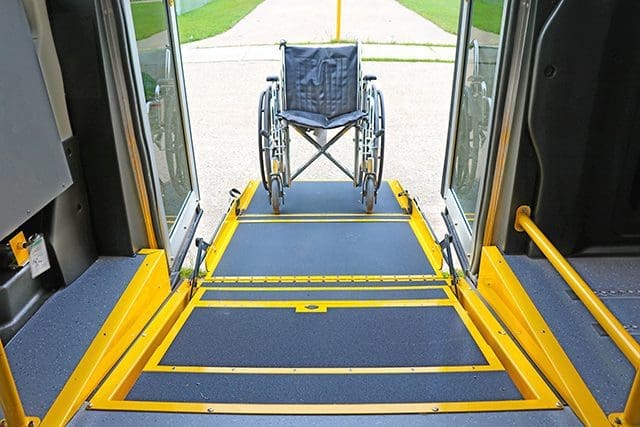
Most ramps are built to last about 10,000 cycles. But how long that is depends on how often you use it.
Let’s break that down
If you use your ramp:
- Every day
- About 10 times a day
You’re looking at a lifespan of around three years.
If your ramp is used less often, it might last much longer. But if it’s used daily, especially in busy settings like care homes or community services, you’ll reach that limit faster.
Maintenance is key
To keep your ramp running longer:
- Follow manufacturer guidelines
- Service it every 750 cycles or every 6 months, whichever comes first
- Keep it clean, check for debris, and don’t skip tune-ups
When should you think about wheelchair van ramp replacement?
If your ramp starts to feel slower, gets noisy, or needs repairs more often, it might be time to think about a replacement. Like anything mechanical, ramps don’t last forever. Regular checkups help you stay ahead of surprise breakdowns.
Need help troubleshooting your wheelchair van ramp?
You probably came here because your wheelchair van ramp isn’t working right, or maybe it’s acting up more often than it should. When you rely on a ramp every day, even small problems can feel like big headaches.
Here’s what you now know:
- What to check when you’re experiencing wheelchair van ramp issues
- Regular maintenance helps extend the life of your ramp
- There are signs when it’s time to replace your ramp or van entirely
If your current wheelchair van has seen better days, is getting harder to rely on, and the ramp is causing more stress than support, it might be time for an upgrade. Don’t wait until you’re stuck, reach out to us today to explore better options.
At MoveMobility, we specialize in building safe, durable, and easy-to-use accessible vehicles for organizations like yours across Canada. We build wheelchair vans with care and purpose to serve real people with real needs. Our team is dedicated to removing barriers to mobility and independence with various options, including vans with lifts, manual and powered ramps, and flexible interior layouts. Our work has helped thousands of individuals regain their freedom, and we’re here to help you do the same. If you’ve got questions, click the button below to talk to a mobility expert.
If you’re not quite ready to chat, no problem, we’ve got more helpful resources to guide you on your journey.
Start by checking out our article or video below on ramps vs. lifts for wheelchair vans.
This will give you a better idea of which option is right for you, depending on your needs. It’s a great first step if you’re thinking about upgrading or replacing your current setup.
After that, check out our articles on manual and powered ramps. If you’re looking into a new wheelchair van, these two articles will help you decide what type of ramp will work best for your organization.


